Searching for Ancestral Memories
Mogilev-Podolsky and Czernowitz
Trip Report
Introduction - Page 1 - Page 2 - Page 3
Part I--Mogilev-Podolsky

We arrived in Kiev on May 15, 2002 at 2:45 p.m. on an Air France flight from New York through Paris. We had been flying for about 13 hours. Sasha picked us up and we drove for about 6 hours to Mogilev-Podolsky. On the way, we started feeling as though we had crossed over into a different world. There were long stretches of green farmlands and we drove through many small villages. Sasha played a tape with Yiddish music which was a good idea since that would be the only language I had in which to communicate.
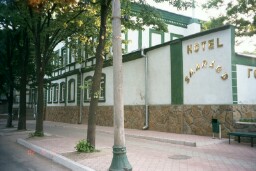 We
reached Mogilev-Podolsky about 10:00 p.m. and after a quick meal at a local
café, we went to our hotel. It was a new hotel and they gave us a suite,
which consisted of a living room, bedroom, hall and bath. I was elated because
I thought we might not even have our own bath, so this was great!
We
reached Mogilev-Podolsky about 10:00 p.m. and after a quick meal at a local
café, we went to our hotel. It was a new hotel and they gave us a suite,
which consisted of a living room, bedroom, hall and bath. I was elated because
I thought we might not even have our own bath, so this was great!
The next morning Sasha picked us up at the hotel at 9:00 a.m. We then picked up a gentleman by the name of Mr. Kaplan, and headed to the cemetery. Mr. Kaplan is a local Jew who maintains a small Holocaust museum and oversees the Jewish cemetery. First we passed the regular Jewish cemetery that belonged to the Jewish residents of Mogilev-Podolsky. This cemetery is fenced and well maintained. To the right of the regular Jewish cemetery is an open field with some headstones standing, some knocked sideways and over. This is the cemetery used for Jews deported from Bukowina. Per Mr. Kaplan, originally there were some metal markers on the graves from the time of the Ghetto in 1941-1944. Any of these that remain are so rusted that they are illegible. After the war, some Jews from Bukowina returned to place headstones on their relatives' graves. These are now almost 60 years old and very worn. There are also a few new headstones, some of them incorporating the old ones from 60 years ago. The engraving on some of the stones has been traced with a black marking pen so that they can be seen better and photographed. Also Mr. Kaplan has marked some graves with numbers corresponding to his "Drucker's List" map.
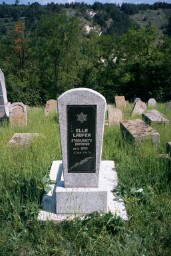
Shortly after our arrival at the cemetery, another gentlemen shows
up--he's the man who is to make the headstones for my grandparents (also arranged
by Sasha). Now there are five of us out there: Sasha, Mr. Kaplan, the gentlemen
who will make the headstone, my husband (taking the pictures) and me (see picture,
below left). The graves of my grandparents do not have stones, but from the
"Drucker's List" map compared to the existing headstones of others, it is very
clear exactly where their graves are. Once that is established, we try to work
out how the stone is to be fashioned. Nearby, I see a recent headstone (Ella
Laufer, pictured at left) that would work. The problem is time; today is Thursday
and the stones must be finished and installed by Sunday noon. We head over to
the engraver and we pencil out what will be on the stones. Tomorrow morning
before we leave for Czernowitz we have to come by the workshop and approve the
engraving.
 |
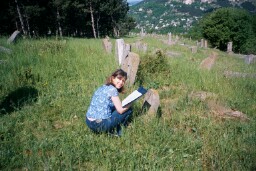 |
 |
|
left to right: Mr. Kaplan, Sasha, the headstone
maker, and myself |
Melita Fuhrman Vickter at the Mogilev
("Druker's list") cemetery. |
Older headstones at the cemetery, erected after WWII.
|
We left the cemetery and drove to the commercial center of Mogilev-Podolsky, essentially one street about three or four blocks long. We went to the site of the former ghetto, but nothing remains of the original buildings. On the grounds where the ghetto was located is the local bazaar. Adjacent to the bazaar is a newer building with a plaque stating that this was the site of the ghetto.
 |
 |
Close to the center of town are two monuments. One is a tribute to the righteous gentiles depicted by two Christians holding a child that wears a yellow Jewish star. The only color in the monument is the yellow in the Jewish star. The other monument is to the victims of the Shoah. These are recent additions since the independence from the Soviets.
 |
 |
We drove to the Dneister Riverbank, the site where Jews from Bukowina crossed over into Transnistria. There was a plaque stating that this was the dispatch area for Jews to the various ghettos in Transnistria. In a later conversation with Mr. Kaplan, he told me that there is a mass grave under the building with the plaque.
 |
 |
Mr. Kaplan maintains a holocaust museum/Jewish community house in Mogilev Podolsky. There are three rooms with various maps and pictures on the walls. This facility also serves as a Jewish community house, which is a gathering place for some of the elderly Jews. They also collect clothing and food for the needy Jews of Mogilev-Podolsky. He has a substantial book collection covering the Holocaust and some memorial books. He said copies are available at Yad Vashem.
Maps of Holocaust Ghettos in Ukraine
 |
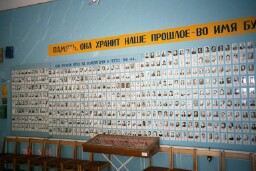 |
 |
 |
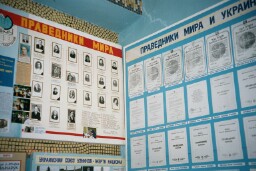 |
 |
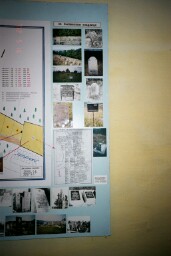 |
In the back room there is a large map of the cemetery in Mogilev-Podolsky.
On the right side is the section devoted to the Drucker's List Cemetery. I enlarged
some of the pictures from this part of the map. Note on the close-up below is
a copy of page 55 of the Drucker's List map. It is this page that shows my grandmother's
grave. This is what started it all.
 |
Close-up of Bukowina Section Pictures
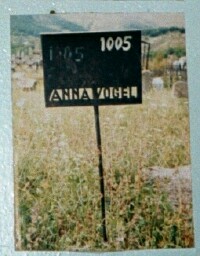 |
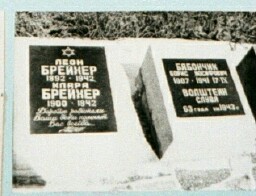 |
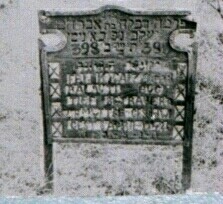 |
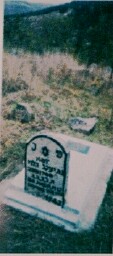 |
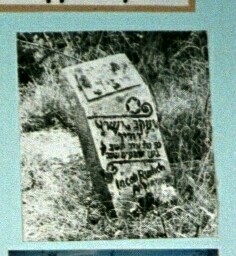 |
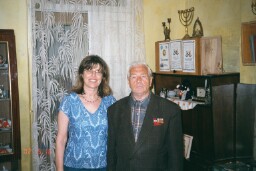 |
As shown above on the marker for Anna Vogel, Mr. Kaplan has started
numbering the graves and making an index. His problem is that he cannot read
Hebrew, so he cannot identify those markers that are only in Hebrew. He told
me that he has been trying to solicit funds so that he can do some restoration
on this cemetery. To the right is a picture of Mr. Kaplan and me. The next morning, Friday May 17, Sasha would drive us to Czernowitz.
Before we left we had to stop by the workshop and inspect the engravings on
the stones we ordered. This wonderful person who did the engraving had never
gone home from the previous afternoon so that I would be able to approve the
engravings before we left for Czernowitz. I made a few minor corrections, but
they were beautifully done. They would complete the work and install the stones
by Sunday at 12:00 noon. Now we could drive to Czernowitz. It took us four hours to drive
from Mogilev-Podolsky to Czernowitz. We could have reduced the time by driving
through Moldova, but Sasha thought we might experience some trouble getting
across the border. So he had to drive through a longer route to circumvent crossing
through Moldova. We drove through several small towns and saw many cows on the
main road--now becoming a familiar sight. 
![]()
Introduction - Page 1 - Page 2 - Page 3
